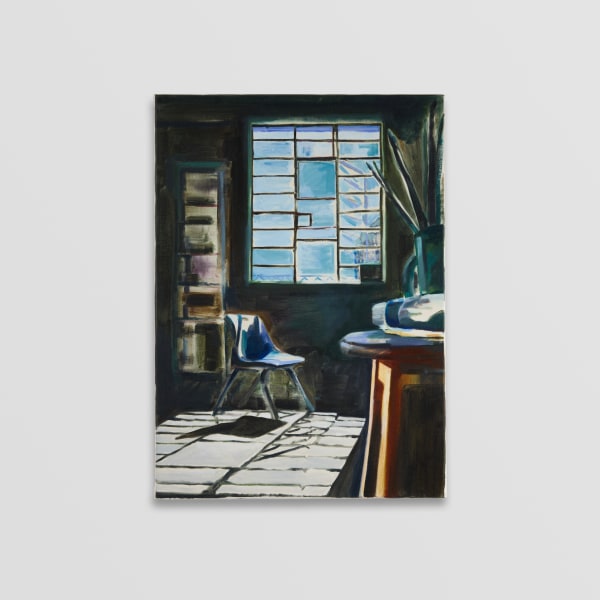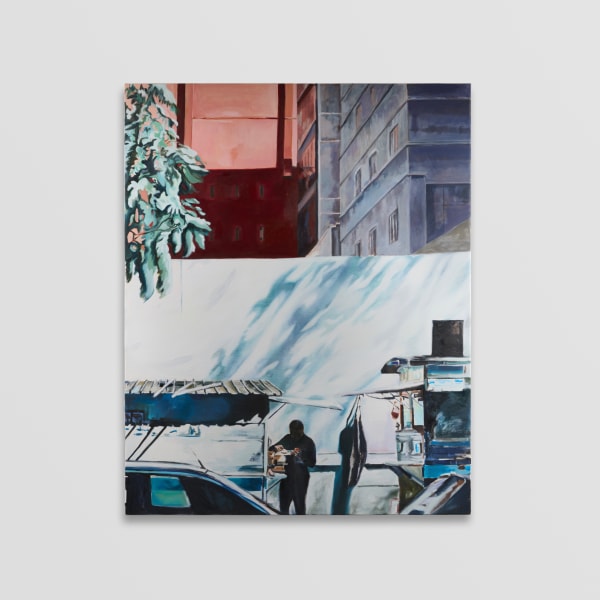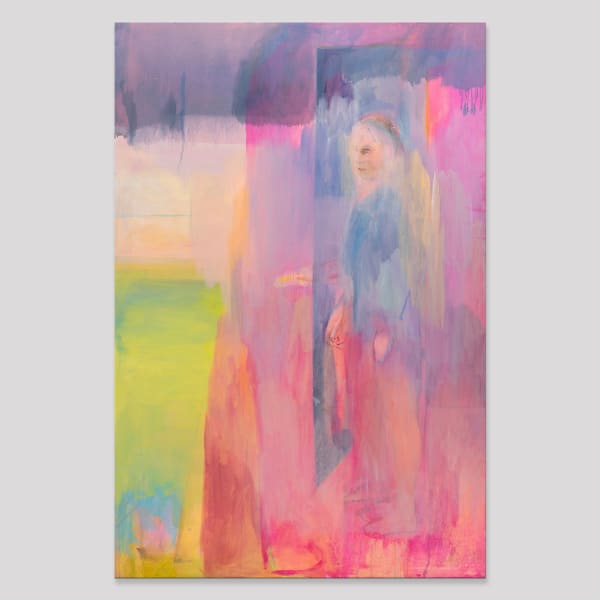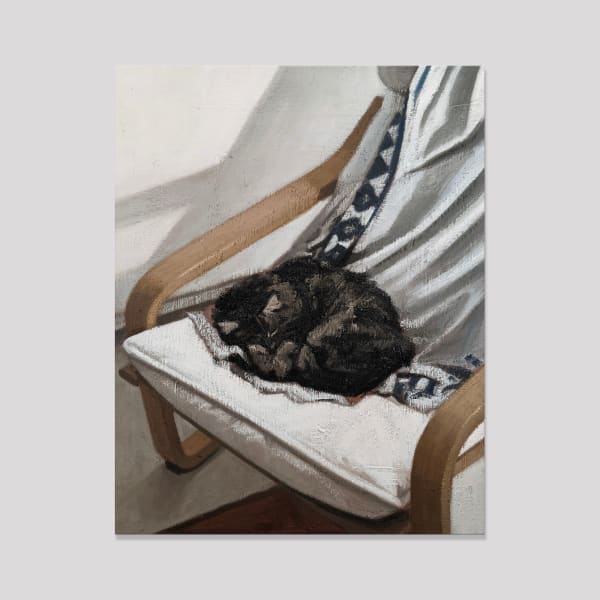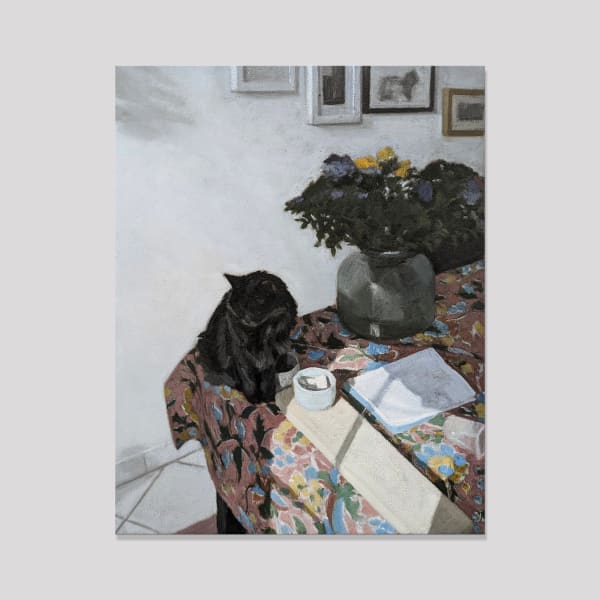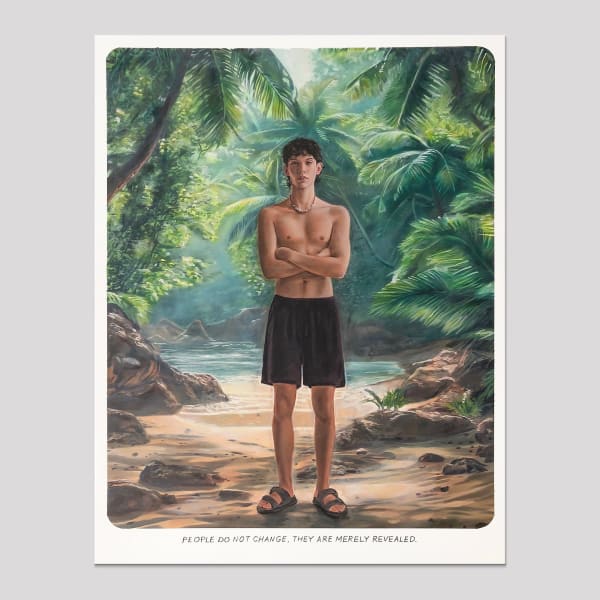Orchestrateurs d'images: Muntean & Rosenblum, Maxime Biou, Sarah Maison, Claire Fahys
Espace Meyer Zafra is very pleased to introduce you to its first ever group exhibition devoted to figurative painting, entitled Orchestrateurs d’images. From January 23 to March 6, 2025, this exhibition will bring together the duo Muntean & Rosenblum, Maxime Biou, Sarah Maison and Claire Fahys.
Orchestrateurs d’images explores the multiple methods used by these artists to exploit various images, whether visual, mental or historical. Within their works, they bring together and harmonize all the means available, such as photography, mental image, real scenes, art history or popular media.
Painting, by definition, is an interpretation of reality. Whether in the animal series presented by Maxime Biou or in the series by Claire Fahys produced during her residency in Mexico, we can find this orchestration of visual images, which originates in photography and which will be recomposed later in order to find the emotion felt by the observer; the most important aspect is not in the reproduction of reality but in the sensation, in the inner vibration generated by the image.
In the work Sans Titre (Fig. 3), Maxime Biou depicts a cat curled up, sleeping peacefully on an armchair, bathed in soft natural light, the artist’s favorite trademark. The sobriety of this painting, stripped away from all spatio-temporal markers, allows the spectators to feel a certain softness and intimacy inspired by everyday life. This animal series fully embodies the artist’s aesthetic research: the composition, the material, the color, the work of the drapery... Each element testifies to an obvious pleasure in the act of painting. Moreover, the subject represented here, his cat with whom he lives with, reveals at its peak the relationship of intimacy and simplicity that we can find in the work of Maxime Biou.
In contrast to this subdued light, the overwhelming light of Mexico is highly infused in Claire Fahys’ paintings. Influenced by the urban landscapes of Richard Dieberkorn and the windows of Lois Dodd (as can be seen in the work Lagos, 2pm (Fig. 6)), Fahys pays particular attention to the colorful planes and subdivisions of the painting. In Viento Solar “Solar Wind” (Fig. 5), the eponymous work of the Mexican series, the artist captures a banal urban scene, but renders the intensity of the light which, by crushing everything under its radiation, reducing the figures to simple silhouettes. This phenomenon of blinding sunlight, which strikes the Europeans eyes as they arrive in South America, is one of the major aspects that Fahys successfully reproduces and captures, in all its power and energy.
If the interpretation of reality passing through everyday life is present in Maxime Biou and Claire Fahys works, in Sarah Maison and the duo Muntean & Rosenblum, it is the human body that imposes itself as the central subject. In the work Figure marchant (Fig. 7) by Sarah Maison - composed and recomposed many times over nearly 3 years - a figure emerges or disappears according to the viewer’s interpretation. Through interlacing colors, the artist questions the materiality of the body, its relationship with a blurred, abstract environment. Her spaces, indefinite and timeless, are devoid of any specific narrative. Each of Sarah Maison’s paintings is born from a real image, often a representation of herself, but is transformed into a mental abstraction, where the individual becomes an archetype rather than a specific person.
As for the compositional approach of Muntean & Rosenblum’s painting, it is closer to traditional painting, although derived as much from the collective memory of figuration in popular media (fashion magazines) as from direct appropriations of Renaissance, Baroque and Neoclassical motifs. Presented as paintings of adolescent life, the images are always surrounded by a white border. Visually, they are reminiscent of an old-fashioned television set or images from popular comic strips. A maxim, an aphorism or an expressive comment is handwritten in the lower part of the canvas. The text is never directly linked to the image, but is not unrelated to the painting either. The figures depicted as in the work Untitled (Hapiness begins to deteriorate) (Fig.1), are static and seized by a feeling of weariness. The viewer is deprived of any easily readable psychological content. The subject, despite the fact that he is wearing fashionable clothes, sneakers, a familiar lifestyle, does not immediately lead to a feeling of personal identification.
Through a diversity of approaches, these artists orchestrate their images with a mastery that questions the relationships between perception and reproduction. By playing around with references, appearances and cultural resonances, each of these creators composes, deconstructs and recomposes, inviting the viewer to an intimate and multiple exploration of the image and its meanings.








